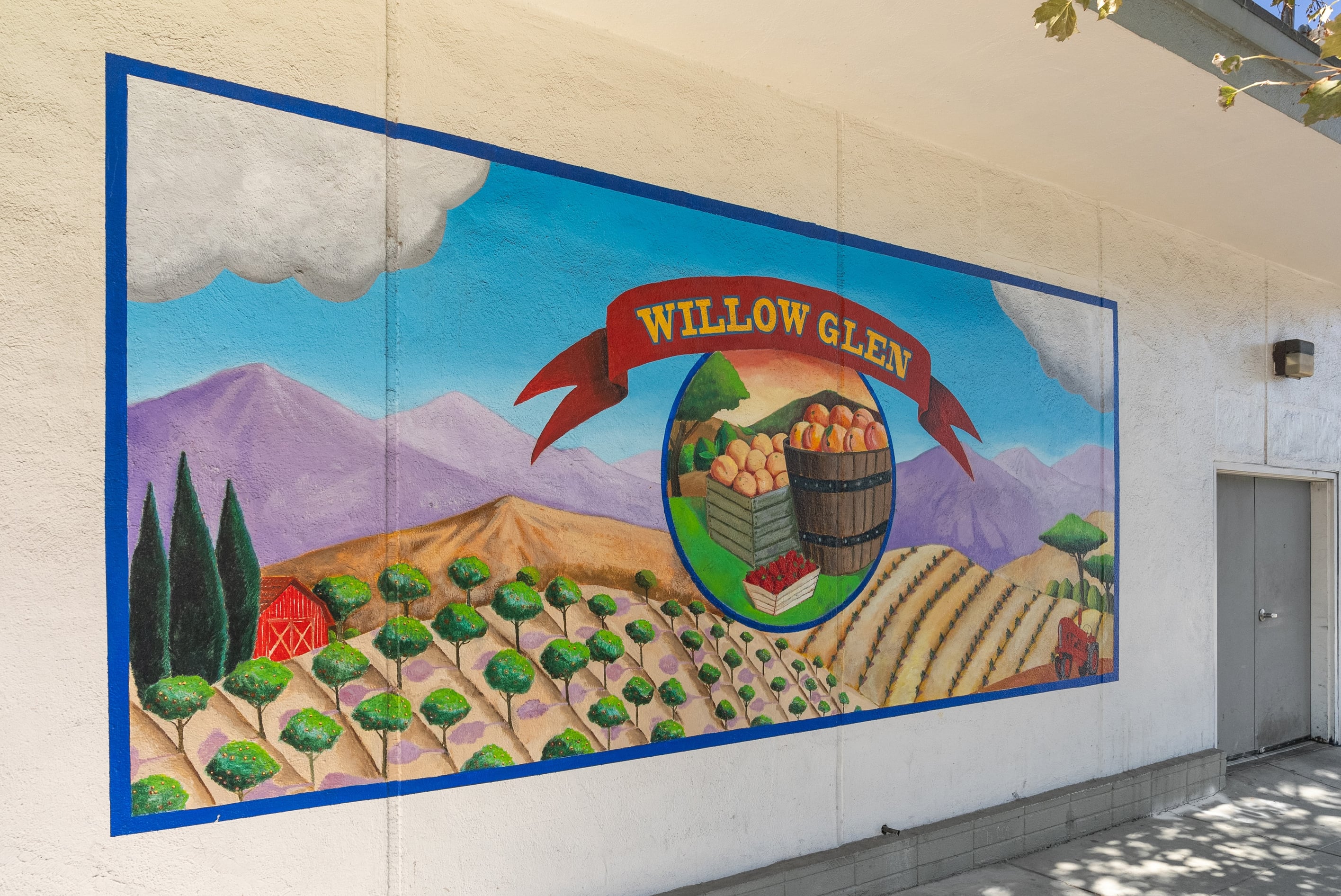Your Real Estate Questions, Answered
FAQs with Emir: Clear Guidance for Buyers & Sellers
From buying your first home to planning a ground-up renovation, real estate comes with big questions—and the right answers make all the difference. Emir combines market expertise with contractor insight to explain the details that matter: pricing sources, renovation timelines, school boundaries, disclosures, and investment strategies. Explore the FAQs below to move forward with confidence, backed by clear, actionable guidance tailored to Bay Area real estate.
MLS + county recorder data power medians and $/sf; we refresh at least monthly (often weekly in hot submarkets) and filter for outliers; methodology and sample sizes are documented on each page.
Set MLS-driven alerts by micro-market, school zone, beds, ADU flags, and price; include “coming soon,” and review a weekly heat map of new/pendings to time offers.
Cut DOM with pro photos/twilight, floor plans, 3D tours, video reels, compelling copy, precise pricing, targeted digital ads, pre-list buzz, and a Thursday launch cadence.
Before paying for plans: confirm zoning/FAR/setbacks, utilities capacity, soils/topo, tree constraints, ROM budget, and neighbor context so design paths are approvable and buildable.
Typical major addition/build: feasibility 4–8 wks, design/engineering/permits 3–9+ mos, construction 6–18+ mos; milestones: design, permits, site/foundation, framing, MEP rough, insulation/drywall, finishes, punch.
Emir sources licensed/insured trades with strong portfolios, checks references and permit histories, pilots small scopes first, and manages contracts, schedules, and QA/QC.
Emir vets licenses/insurance, scopes apples-to-apples bids, sets schedules, tracks milestones/QC, controls change orders, verifies lien waivers, attends inspections, and closes punch lists.
He sequences quick, high-ROI items first (paint/floors/lighting/landscape), orders long-lead fixtures early, batches trades efficiently, and aims for a photo-ready deadline to list into the strongest weekly window.
Yes—he provides ballpark ranges on common scopes (roof, sewer, panel, kitchen/bath, windows) during early tours, then refines with vendor walkthroughs and written bids post-inspection.
Net sheet = price minus loan payoffs, commissions, title/escrow, transfer taxes, credits, HOA dues, and liens—review before launch.
Provide complete TDS/SPQ/NHD and permit history; add context memos for past repairs, known quirks, and any non-permitted items.
Use tight showing windows, advance notice, shoe covers, staging zones, and a pet/kid plan; keep the home “photo-ready” between slots.
Pre-comp the appraisal, prep a rebuttal package, and negotiate credits vs. price cuts to keep the buyer’s loan qualified.
Prefer strong financing, short contingencies, seller rent-back if needed, and clear as-is language with defined repair credits.
Title 24 pushes better envelopes, HVAC, lighting, and fenestration; it raises design/spec costs modestly but reduces operating costs—budget compliance time and inspections.
Rate buydowns often beat equal price cuts on monthly payment; confirm with lender scenarios and a seller net sheet.
Pro photos + floor plans + 3D tours + short video increase clicks, time-on-page, and showings—cheap relative to price improvements.
Underlist works in high-demand segments; transparent pricing suits thin-buyer niches; always anchor to tight, recent comps.
Order inspections → finalize scope → book trades → photography → list on a Thursday for weekend momentum and maximum eyeballs.
Interior paint, floors, lighting, landscaping, hardware, and light bath/kitchen refresh lead ROI; fix safety/permit issues first.
Use district address finders and direct district calls; confirm parcel-level assignment in writing and ignore third-party site labels when writing offers.
Phase to live-in: start with safety/systems, then one wet room at a time; set dust control/temporary kitchen, schedule noisy work daytime, and keep a 10–15% contingency.
Budget ~0.5–2% of value for a pre-sale refresh and 5–15%+ for targeted remodels; align scope to comp set and expected hold period for best returns.
Top ROI: interior paint, LVP/refinished floors, LED/fixture updates, hardware/mirrors, light bath refresh, kitchen counters/appliances, landscaping, and repairs that remove buyer objections.
Yes—Emir coordinates e-signing, mobile notaries/RON (where allowed), wire verification, key handoff, and utility turn-ons for seamless out-of-state closings.
Often—home warranties are useful the first year in older stock for appliances/HVAC/water heaters; they don’t replace inspections and have caps/exclusions—choose a robust plan.
Pre-war red flags: foundation movement, poor drainage, knob-and-tube or outdated panels, galvanized pipes, clay/Orangeburg sewer, moisture/intrusion, and unpermitted additions.
Standard CA disclosures include TDS, SPQ, NHD, Lead-Based Paint (pre-1978), Earthquake, Water Heater/Smoke/CO, Megan’s Law notice, and full HOA packages; scrutinize permits, additions, and “as-is” notes.
A seller rent-back lets sellers remain post-close; use CAR forms, daily rent/deposit, proof of insurance, firm end date, and holdover penalties; confirm lender/occupancy rules up front.
Typical CA costs: title/escrow, lender/appraisal, recording, transfer taxes (city/county), HOA docs if applicable, and prorations—~1–3% buyer, ~4–8% seller depending on locale and price.
Sometimes—off-market/coming-soon can reduce competition and protect privacy, but due diligence and pricing discipline still matter; expect limited selection.
Aggressive escalations risk low appraisals; mitigate with strong comps, seller credits, appraisal-gap funds, and seasoned local lenders who can rebut or rush reviews.
Most escrows close in 21–30 days with financing (10–14 days cash); common delays are appraisal, loan conditions, title issues, repairs, and HOA document delivery.
Winning terms: verified funds, right-sized contingencies, appraisal-gap reserves, escalation with caps, seller-friendly rent-back, and a short, certain close coordinated with the lender.
Transfer taxes vary by city/county (and who pays is negotiable locally), meaning closing costs differ materially between, say, SF/Oakland and suburban cities—get a net sheet specific to the property.
Seasonality: spring is broadest demand; summer is family-move heavy; fall is serious buyers; coastal/wine areas peak around events—avoid major holidays unless inventory is very tight.
Locally, DOM <15 = hot, 15–30 = balanced; months of supply <2 favors sellers; track absorption (pendings/new listings) weekly by micro-market rather than relying on countywide averages.
Compare $/sf only after normalizing for lot size, bed/bath count, condition, school zone, walkability, age, and view; prioritize apples-to-apples comps within 0.5–1 mile and 6–12 months.
Limited HMB inventory + seasonal tourism can amplify spring–fall competition; keep pre-approvals current, move early on quality listings, and price off hyperlocal comps rather than monthly medians.
Vet licensing/insurance/references and permit history; use detailed scopes, allowances, milestone payments, and strict change-order controls.
Yes—1031s work but timelines are tight; mind 45/180-day rules, ID accuracy, “boot,” and use a qualified intermediary and CPA.
Model rent control, just-cause, and registration fees; budget longer turnovers and potential legal counsel when underwriting.
Many East Bay cities require sewer lateral compliance at sale/permit; budget roughly $4k–$12k+ depending on access and line condition.
Flip in fast-turn, cosmetic-heavy areas; BRRRR where rehab + rents support refi; hold in A-school/job hubs for durable appreciation.
Define price range, beds, age/condition, yield target, ADU potential, and school/commute filters; require DSCR ≥1.15–1.25 at today’s rates.
Yes—1031s work but yield is tight; mind 45/180-day rules, like-kind, identification pitfalls, and “boot”; use an accommodator and tax advisor.
Many Peninsula/South Bay purchases are above conforming limits; jumbo underwriting emphasizes reserves/DTI and building condition—rate spreads vs conforming shift with markets.
Pre-qual is a quick, unverified screen; fully underwritten pre-approval validates income/assets/credit upfront, shortens timelines, and strengthens offers materially.
ARMs can be smart for 3–7-year horizons with income stability, offering lower initial rates; review caps, indices, and refinance risk—fixed suits long holds and low risk tolerance.
Seller buydowns can widen the buyer pool more efficiently than equivalent price cuts; compare net sheets and buyer payment impact with your lender to choose the better lever.
Bring goals, pre-approval/POF, must-haves/nice-to-haves, timeline, commute and school needs, neighborhoods of interest, renovation appetite, and any prior inspection reports for efficient planning.
SF condos can present HOA litigation, TIC conversion histories, and stricter reserve expectations than some Peninsula HOAs; read minutes, budgets, reserve studies, and governing docs closely.
Underwriters weigh HOA reserves, delinquencies, litigation, and special assessments; weak reserves or active litigation can impair lending and resale—scrutinize budgets/reserve studies/minutes.
Yes—Alameda ferries improve comfort/reliability for SF commutes; evaluate schedule, parking, and bike storage, and confirm last-boat times relative to your work hours.
Yes—Morgan Hill suits hybrid commuters seeking larger lots and newer homes; 101 and limited Caltrain matter on office days, but remote days recapture time and TCO, making it compelling for 2–3-day office schedules.
Caltrain is best for Peninsula/SF commutes, BART for East Bay–SF, ACE for Tri-Valley–San Jose, ferries for Alameda–SF; compare true door-to-door times, not just schedule speed.
Yes—San Mateo’s DT/Caltrain core is a value play for Peninsula commuters who prize walkability and rail; expect premium $/sf for smaller homes/condos but strong liquidity and time-savings ROI.
Milpitas’ BART station boosts value for SF/East Bay commuters, supports car-light living, and underpins TOD appreciation; relative to similarly priced cities without rail, expect stronger demand for walkable townhomes/condos and newer SFR near transit.
Fremont marries strong schools (e.g., Mission San Jose area) with diverse housing (SFR, townhomes, transit-adjacent condos), multiple BART/freeway options, and varied price tiers—appealing to families, first-time buyers, and investors alike.
Oakland’s flats face soft-story/URM/sewer lateral realities and faster permitting than SF, while hills add fault/slide/fire considerations and longer reviews; seismic retrofits and EBMUD lateral compliance are common diligence items.
Microclimates matter: Redwood City is sunny/warmer with lower exterior maintenance; Daly City is foggier/cooler with more moisture exposure—factor comfort and upkeep into TCO.
WUI rules require 0–5 ft ember-resistant zones, screened vents, Class-A roofs, and vegetation management; some cities require inspections, and insurers reward compliance.
Use Class-A roofs, corrosion-resistant fasteners, fiber-cement/metal cladding, high-performance windows/doors, robust flashing/WRB, and marine-grade coatings; expect more frequent exterior service.
Yes—CEA/private quake policies are available; pricing/deductibles are high, but retrofits and higher deductibles can moderate cost—insurance is optional but risk-based.
Coastal wind/salt accelerate wear on siding, windows, decks, and hardware; budget for corrosion-resistant materials, frequent exterior maintenance, and potentially higher insurance/drainage upgrades in view/bluff areas.
Prioritize quake risk regionwide, wildfire in WUI zones, floodplains/tsunami/coastal erosion where applicable, and landslide on steep sites; get NHDs, insurance quotes, and expert inspections.
Hillside ownership in Los Gatos adds geotech due diligence (soils, drainage, retaining, tie-backs) and WUI wildfire requirements (defensible space, ember-resistant vents, Class-A roof); budget for insurance, vegetation management, and periodic slope/waterproofing work.
Usually—lower home prices and big lots in Gilroy can offset longer commutes; build a TCO model (mortgage + taxes + fuel/tolls + time) and weigh hybrid schedules to validate the savings.
For walkability + schools, target blocks near Downtown Campbell/The Pruneyard and established SFR tracts within Campbell Union pockets; you’ll trade larger lots for sidewalks, parks, and bikeable errands while staying close to well-rated elementary zones.
San Jose offers more space, lower $/sf, stronger ADU potential, and proximity to South Bay jobs; the Peninsula trades higher prices and smaller lots for faster SF access, Caltrain convenience, and walkable downtowns—choose based on commute, schools, and lifestyle.
Normalize by bed/bath, lot size, condition, school zone, age, view, and walkability; compare near-term comps within 0.5–1 mile.
ARMs can lower payments for 5–7-year stays; stress-test caps/refi risk; fixed loans fit long holds or low risk tolerance.
Lenders scrutinize reserves, delinquencies, and litigation; weak HOAs raise rates or sink loans—read budgets, minutes, and reserve studies.
Work both: off-market can cut competition but limits exposure; MLS maximizes selection; use disciplined pricing and full diligence either way.
Use district address finders and direct confirmation; run door-to-door commute tests at peak/off-peak and validate transit options.
Prioritize foundation/drainage, roof, electrical panel/wiring, plumbing/sewer, unpermitted work, and HOA litigation or weak reserves.
Yes—fully underwritten pre-approval (income/assets/credit validated) materially strengthens offers and shortens timelines; include DU/LP findings.
An appraisal-gap clause commits extra cash if value comes in low; cap it, verify funds, and align with lender so the loan still works.
Yes—permitted, well-finished ADUs broaden buyer pools and rental options, often lifting resale in Cupertino/San Jose/Redwood City; appraisers give value based on quality, legality, and comps.
Timelines vary: San Jose/Cupertino 4–12+ weeks for standard scopes; Oakland/SF can run longer with plan check; minor like-for-like may be over-the-counter—always pre-flight with the city.
Historic overlays add design review, material constraints, and longer approvals but protect value/aesthetics; plan sensitive scopes and consult preservation staff early.
Kitchen/bath updates require building + electrical + plumbing (and mechanical for ventilation); structural work needs engineering and full plan check; historic overlays add design review.
SB-9 lets many SFH lots add a duplex and/or lot split under objective standards; homeowners with standard lots/utilities benefit most—expect design/parking/utility constraints by city.
Emir pre-screens with a contractor’s eye—envelope/drainage, foundation, roof, panel, plumbing, HVAC, permit history—then orders targeted inspections and prices risk into offers to avoid surprise CapEx.
Start with zoning/ADU handouts, measure setbacks/coverage/height, evaluate parking and utility tie-ins, sketch a site plan, and confirm with a planner or pre-app meeting.
Often—Alameda’s Victorians can trigger historic review for exterior alterations (windows, siding, porch details) and encourage sensitive seismic/energy upgrades; plan for preservation guidelines and longer permit paths on designated properties.
Expect weekly written updates with midweek check-ins, a shared Gantt/timeline, photo logs, budget-vs-actual reports, and one accountable point of contact via email/text/collab tools.
Many Peninsula/South Bay purchases are above conforming limits; jumbo underwriting emphasizes reserves/DTI and building condition—rate spreads vs conforming shift with markets.
Pre-qual is a quick, unverified screen; fully underwritten pre-approval validates income/assets/credit upfront, shortens timelines, and strengthens offers materially.
ARMs can be smart for 3–7-year horizons with income stability, offering lower initial rates; review caps, indices, and refinance risk—fixed suits long holds and low risk tolerance.
Seller buydowns can widen the buyer pool more efficiently than equivalent price cuts; compare net sheets and buyer payment impact with your lender to choose the better lever.
Normalize by bed/bath, lot size, condition, school zone, age, view, and walkability; compare near-term comps within 0.5–1 mile.
ARMs can lower payments for 5–7-year stays; stress-test caps/refi risk; fixed loans fit long holds or low risk tolerance.
Lenders scrutinize reserves, delinquencies, and litigation; weak HOAs raise rates or sink loans—read budgets, minutes, and reserve studies.
Work both: off-market can cut competition but limits exposure; MLS maximizes selection; use disciplined pricing and full diligence either way.
Use district address finders and direct confirmation; run door-to-door commute tests at peak/off-peak and validate transit options.
Prioritize foundation/drainage, roof, electrical panel/wiring, plumbing/sewer, unpermitted work, and HOA litigation or weak reserves.
Yes—fully underwritten pre-approval (income/assets/credit validated) materially strengthens offers and shortens timelines; include DU/LP findings.
An appraisal-gap clause commits extra cash if value comes in low; cap it, verify funds, and align with lender so the loan still works.
Net sheet = price minus loan payoffs, commissions, title/escrow, transfer taxes, credits, HOA dues, and liens—review before launch.
Provide complete TDS/SPQ/NHD and permit history; add context memos for past repairs, known quirks, and any non-permitted items.
Use tight showing windows, advance notice, shoe covers, staging zones, and a pet/kid plan; keep the home “photo-ready” between slots.
Pre-comp the appraisal, prep a rebuttal package, and negotiate credits vs. price cuts to keep the buyer’s loan qualified.
Prefer strong financing, short contingencies, seller rent-back if needed, and clear as-is language with defined repair credits.
Rate buydowns often beat equal price cuts on monthly payment; confirm with lender scenarios and a seller net sheet.
Pro photos + floor plans + 3D tours + short video increase clicks, time-on-page, and showings—cheap relative to price improvements.
Underlist works in high-demand segments; transparent pricing suits thin-buyer niches; always anchor to tight, recent comps.
Order inspections → finalize scope → book trades → photography → list on a Thursday for weekend momentum and maximum eyeballs.
Interior paint, floors, lighting, landscaping, hardware, and light bath/kitchen refresh lead ROI; fix safety/permit issues first.
A seller rent-back lets sellers remain post-close; use CAR forms, daily rent/deposit, proof of insurance, firm end date, and holdover penalties; confirm lender/occupancy rules up front.
Seasonality: spring is broadest demand; summer is family-move heavy; fall is serious buyers; coastal/wine areas peak around events—avoid major holidays unless inventory is very tight.
Title 24 pushes better envelopes, HVAC, lighting, and fenestration; it raises design/spec costs modestly but reduces operating costs—budget compliance time and inspections.
Phase to live-in: start with safety/systems, then one wet room at a time; set dust control/temporary kitchen, schedule noisy work daytime, and keep a 10–15% contingency.
Budget ~0.5–2% of value for a pre-sale refresh and 5–15%+ for targeted remodels; align scope to comp set and expected hold period for best returns.
Top ROI: interior paint, LVP/refinished floors, LED/fixture updates, hardware/mirrors, light bath refresh, kitchen counters/appliances, landscaping, and repairs that remove buyer objections.
Why Work With Emir
Real Estate & Construction Expertise, Together
Buying, selling, or renovating in the Bay Area isn’t just about listings—it’s about having the right strategy and insight at every step. Emir pairs his experience as a licensed Realtor and General Contractor to give clients a unique advantage: data-driven pricing, cinematic marketing, trusted renovation guidance, and proven negotiation skills. With hundreds of transactions supported and deep roots in San Jose, Willow Glen, Los Gatos, and beyond, you’ll have a single point of contact who makes the process clear, efficient, and rewarding.
A Decade of Construction & Real Estate
With 10+ years in construction project management and success in Silicon Valley real estate, Emir understands properties from the foundation up—helping you make confident, informed decisions.
Pricing, Marketing & Negotiation
From data-backed pricing to high-end visuals and proven negotiation, Emir’s strategies are designed to position your property competitively and secure the best outcome—whether you’re buying, selling, or investing.
Trusted by Bay Area Clients
Backed by years of construction experience and a proven record of successful real estate transactions, Emir brings reliability, transparency, and deep local knowledge to every client relationship.
End-to-End Guidance
From first consultation through closing—and even with post-sale improvements—you’ll have one dedicated advisor. Emir manages every detail to keep your process seamless and stress-free.
Service Offerings
Comprehensive Real Estate Services
Every property journey is different—whether you’re buying your first home, preparing to sell, or planning improvements. That’s why Emir brings together real estate expertise and construction insight to cover every stage with one trusted partner. From expert guidance and negotiation, to professional marketing that captures attention, to the contractor advantage that ensures renovations add real value, you get more than representation—you get results.
Buying Services
Shop smarter in San Jose and beyond. Emir combines local expertise with a contractor’s eye to evaluate condition, estimate improvements, and craft competitive offers. Learn the step-by-step buying process.

Selling Services
Price strategically, present beautifully, and negotiate with leverage. Emir pairs contractor insight with high-end marketing to boost value and minimize days on market. Discover the selling strategy.

Renovating Services
Target the upgrades that pay back. Emir prioritizes ROI, coordinates trusted vendors, and oversees permits and schedules—whether pre-sale refresh or post-purchase remodel. See how renovation adds value.

By the Numbers
A Track Record Built on Experience and Insight
These aren’t just numbers—they represent homes transformed, families guided, and projects delivered across Silicon Valley. With a rare blend of real estate expertise and construction know-how, Emir has created results that go beyond the sale. Every client benefits from proven strategy, sharp market knowledge, and a builder’s eye for long-term value.
100+
Families Helped
From first-time buyers to seasoned investors, each client received personalized guidance tailored to their goals.
$200M+
in Sales Supported
Hands-on experience with one of the Bay Area’s top-producing teams—insight that drives smarter decisions.
10+
Years in Construction
From tech campuses to schools, large-scale project management sharpened the skills now applied to residential real estate.
Featured Listings
One of These Bay Area Homes Could Be Your Dream Home
Featured homes showcase the Bay Area lifestyle—modern, vibrant, and full of opportunity. For buyers, each listing is a chance to explore a future home with confidence. For sellers, it’s proof of how professional marketing and local expertise make a property stand out. Browse the listings and take your next step in real estate with clarity.
Why Clients Love Emir
Real Stories. Real Results.
Buying or selling a home is a big deal—and the right guidance makes all the difference. Emir’s clients share how his mix of real estate know-how and construction insight gave them confidence, clarity, and results. Here’s what people across San Jose, Willow Glen, Los Gatos, and beyond are saying.
The Process
Tailored to Your Next Move
Real estate doesn’t need to feel complicated. Emir makes the path forward clear with a structured process that adapts to your goals—whether you’re buying your first home, selling in a competitive Bay Area market, or planning renovations to boost value. With his dual expertise as a Realtor and General Contractor, every step is backed by construction insight, local market knowledge, and a commitment to client success. Here’s what working with Emir looks like.
1
Define Goals
Start with a personal consultation to outline budget, lifestyle, neighborhoods, and must-haves. Emir uses his knowledge of San Jose, Willow Glen, Los Gatos, and surrounding Bay Area communities to help buyers focus on the right fit.
2
Search & Evaluate
Tour properties with expert insight. Emir not only highlights the features but also evaluates condition, renovation potential, and red flags using his construction background.
3
Inspections, Disclosures & Comparable Sales
Before making an offer, Emir helps you interpret property disclosures, inspection reports, and neighborhood comparable sales. His builder-level understanding clarifies true condition and market value, ensuring you bid strategically and avoid costly surprises.
4
Offer & Negotiate
Craft a competitive offer that balances price, terms, and contingencies. Emir’s negotiation strategy protects your interests and strengthens your position in Silicon Valley’s fast-moving market—whether you’re competing with multiple offers or seeking value in quieter segments.
5
Close With Clarity
Coordinate financing, paperwork, and final walkthroughs for a seamless closing. Emir ensures the transition is stress-free, so you can move into your new home with peace of mind.
1
Consult & Plan
Begin with a strategy session to understand your goals and timeline. Emir studies current trends in San Jose, Campbell, Willow Glen, Saratoga, and beyond to position your property competitively.
2
Prep & Improvements
Identify cost-effective updates or renovations that add measurable value. From curb appeal to full kitchen remodels, Emir advises which upgrades deliver the best ROI.
3
Strategic Pricing
Set an asking price based on local comps, market data, and buyer demand. Emir’s data-driven approach ensures your home attracts attention without leaving money on the table.
4
Marketing That Stands Out
Showcase your property with professional photography, drone footage, 3D tours, and targeted digital campaigns. Buyers see your home as more than a listing—it’s a lifestyle.
5
Offers & Closing
Review, compare, and negotiate offers to secure the best terms. Emir manages paperwork, timelines, and communication so you can move forward with confidence.
1
Initial Consultation
Discuss your property’s goals and vision. Emir takes time to understand your priorities—whether it’s a kitchen refresh in Willow Glen, a full remodel in Los Gatos, or strategic updates before selling.
2
Renovation Planning
Develop a clear renovation plan that defines scope, budget, and schedule. Emir blends construction knowledge with real-estate insight to ensure every improvement delivers measurable ROI.
3
Vendor Coordination
Tap into Emir’s network of trusted trades and specialists. He coordinates communication, manages expectations, and keeps your renovation moving efficiently from start to finish.
4
Project Oversight
Monitor progress, craftsmanship, and cost alignment. Emir provides hands-on oversight so your renovation stays on schedule, on budget, and true to your design goals.
5
Completion & Market Impact
Finish with confidence. Each project is wrapped with quality checks and value analysis—so your completed renovation enhances both daily living and long-term resale potential.
One Partner, Start to Finish
Buy, Sell, or Renovate With Confidence -Ready When You Are
Why juggle multiple experts when one can do it all? Emir is both a Realtor and General Contractor—helping you price, market, negotiate, and improve your property. Fill out the form and take the first step toward a seamless real estate experience.
Emir's Contact Details
CA DRE #02192877
CSLB #1140504




